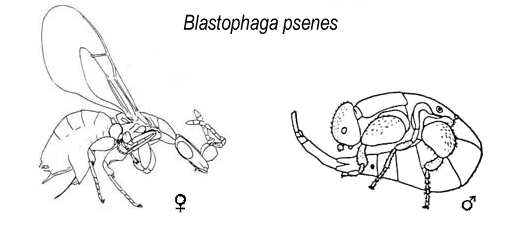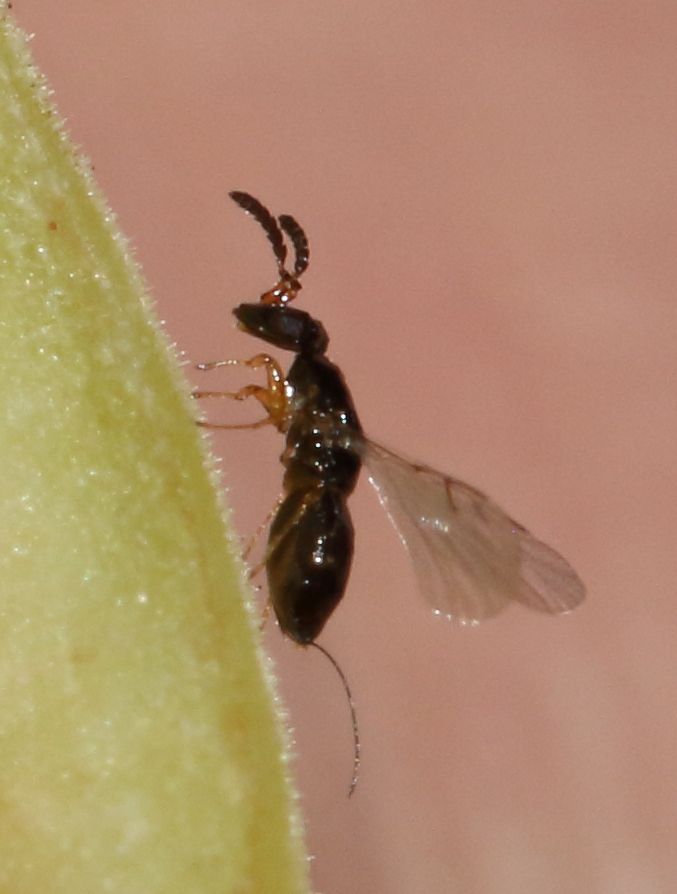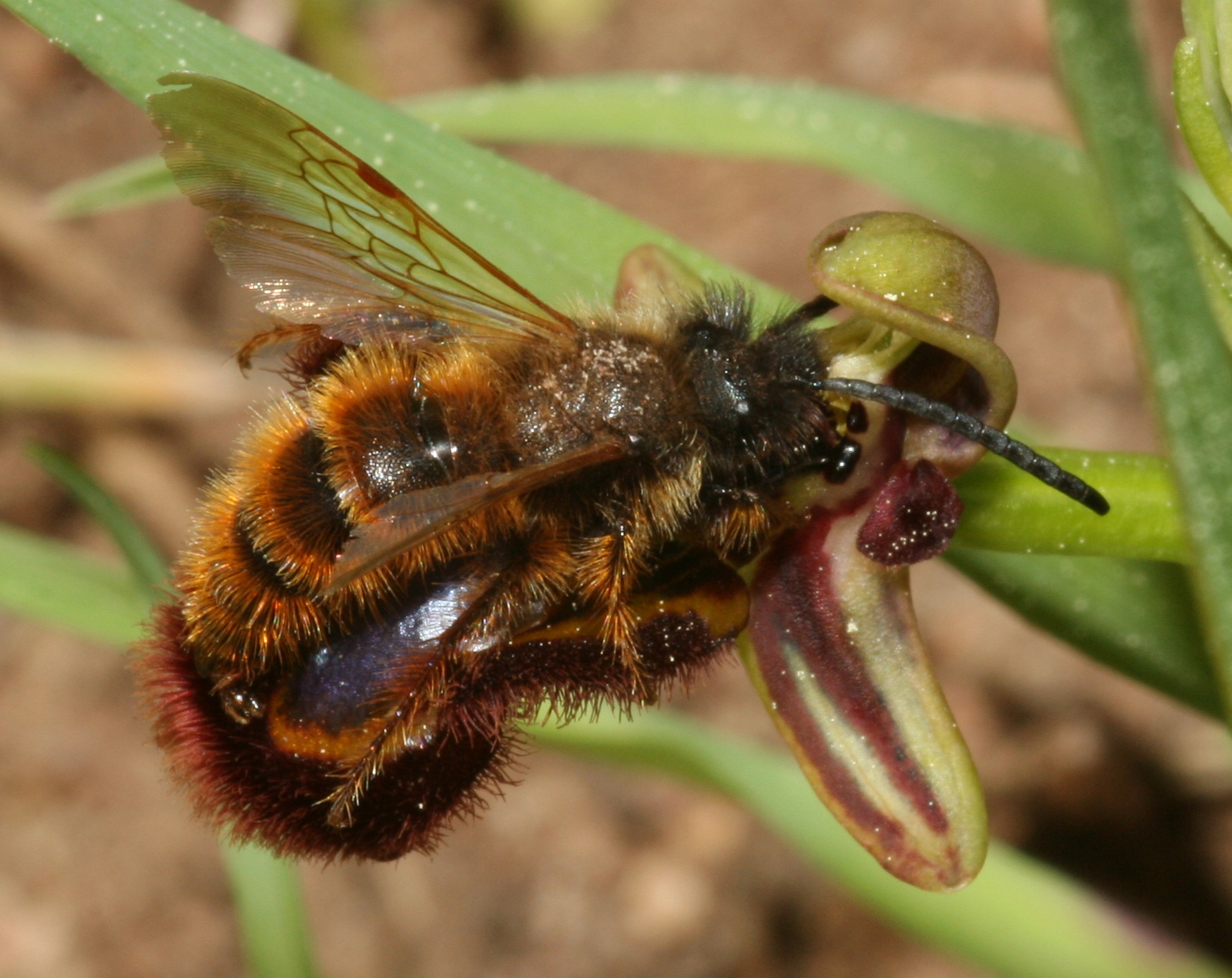|
Syconium
Syconium (: syconia) is the type of fruit borne by figs (genus ''Ficus''), formed by an enlarged, fleshy, hollow receptacle with multiple ovaries on the inside surface. In essence, it is really a fleshy stem with a number of flowers, so it is considered both a multiple and accessory fruit. Etymology The term ''syconium'' comes from the Ancient Greek word ''sykon'', meaning "fig". Morphology The syconium is an urn-shaped receptacle which contains between 50 and 7000 (depending on the species) highly simplified uniovulate flowers or florets on its inner surface. It is closed off from most organisms by the ostiole, fringed by scale-like bracts. Syconia can be monoecious or functionally dioecious: the former contain female flowers with variable style length and few male flowers, and produce seeds and pollen. The latter have male and female forms in different plants: seed figs contain female flowers with long styles and produce seeds; gall figs contain female flowers with short ... [...More Info...] [...Related Items...] OR: [Wikipedia] [Google] [Baidu] |
Fig Wasp
Fig wasps are wasps of the superfamily Chalcidoidea which spend their larval stage inside fig syconia. Some are pollinators but others simply feed off the plant. The non-pollinators belong to several groups within the superfamily Chalcidoidea, while the pollinators are in the family Agaonidae. Pollinating fig wasps are all gall-makers, while non-pollinating fig wasps either make their own galls or usurp the galls of other fig wasps. The lifestyles of these fig wasps rely on the fruit of fig trees to reproduce, with pollinating fig wasps acting as mutualists, and non-pollinating fig wasps as parasitoids. History Aristotle recorded in his '' History of Animals'' that the fruits of the wild fig (the caprifig) contain ''psenes'' (fig wasps); these begin life as grubs (larvae), and the adult ''psen'' splits its "skin" (pupa) and flies out of the fig to find and enter a cultivated fig, saving it from dropping. He believed that the ''psen'' was generated spontaneously; he did no ... [...More Info...] [...Related Items...] OR: [Wikipedia] [Google] [Baidu] |
Agaonidae
The family Agaonidae is a group of pollinating fig wasps. They spend their larval stage inside the fruits of Ficus, figs. The pollinating wasps (Agaoninae, Kradibiinae, and Tetrapusiinae) are the mutualism (biology), mutualistic partners of the Ficus, fig trees. Extinct forms from the Eocene and Miocene are nearly identical to modern forms, suggesting that the niche has been stable over geologic time. Females emerge from ripe figs and fly to another fig tree with developing Syconium, syconia (which contain the flowers). They enter the syconium via the ostiole, pollinate the flowers, and lay their eggs in some of the ovules. The ovules containing eggs develop into galls that support the growth of the wasp larvae. Prior to the final ripening of the fig, wingless males emerge from the galls they developed in. The males enter the galls of their winged sibling females, mate with them and die within the fruit. The newly hatched females then make their way out of the fruit continuing th ... [...More Info...] [...Related Items...] OR: [Wikipedia] [Google] [Baidu] |
Entomophily
Entomophily or insect pollination is a form of pollination whereby pollen of plants, especially but not only of flowering plants, is distributed by insects. Flowers pollinated by insects typically advertise themselves with bright colours, sometimes with conspicuous patterns (honey guides) leading to rewards of pollen and nectar; they may also have an attractive scent which in some cases mimics insect pheromones. Insect pollinators such as bees have adaptations for their role, such as lapping or sucking mouthparts to take in nectar, and in some species also pollen baskets on their hind legs. This required the coevolution of insects and flowering plants in the development of pollination behaviour by the insects and pollination mechanisms by the flowers, benefiting both groups. Both the size and the density of a population are known to affect pollination and subsequent reproductive performance. Coevolution History The early spermatophytes (seed plants) were largely dependent ... [...More Info...] [...Related Items...] OR: [Wikipedia] [Google] [Baidu] |
Ficus
''Ficus'' ( or ) is a genus of about 850 species of woody trees, shrubs, vines, epiphytes and hemiepiphytes in the family (biology), family Moraceae. Collectively known as fig trees or figs, they are native throughout the tropics with a few species extending into the semi-warm temperate zone. The common fig (''F. carica'') is a temperate species native to southwest Asia and the Mediterranean region (from Afghanistan to Portugal), which has been widely cultivated from ancient times for its fruit, also referred to as figs. The fruit of most other species are also edible though they are usually of only local economic importance or eaten as bushfood. However, they are extremely important food resources for wildlife. Figs are also of considerable cultural importance throughout the tropics, both as objects of worship and for their many practical uses. Description ''Ficus'' is a pantropical genus of trees, shrubs, and vines occupying a wide variety of ecological niches; most a ... [...More Info...] [...Related Items...] OR: [Wikipedia] [Google] [Baidu] |
Longitudinal Section Through A Creeping Fig Syconium (Ficus Pumila L
Longitudinal is a geometric term of location which may refer to: * Longitude ** Line of longitude, also called a meridian * Longitudinal engine, an internal combustion engine in which the crankshaft is oriented along the long axis of the vehicle, front to back * Longitudinal mode, a particular standing wave pattern of a resonant cavity formed by waves confined in the cavity * Longitudinal redundancy check, in telecommunication, a form of redundancy check that is applied independently to each of a parallel group of bit streams. * Longitudinal study, a research study that involves repeated observations of the same items over long periods of time — often many decades * Longitudinal voltage, in telecommunication, a voltage induced or appearing along the length of a transmission medium * Longitudinal wave, a wave with oscillations or vibrations along or parallel to their direction of travel * Longitudinal/longitudinally are also anatomical terms of location. See also * Latitudinal ... [...More Info...] [...Related Items...] OR: [Wikipedia] [Google] [Baidu] |
Coevolution
In biology, coevolution occurs when two or more species reciprocally affect each other's evolution through the process of natural selection. The term sometimes is used for two traits in the same species affecting each other's evolution, as well as gene-culture coevolution. Charles Darwin mentioned evolutionary interactions between flowering plants and insects in ''On the Origin of Species'' (1859). Although he did not use the word coevolution, he suggested how plants and insects could evolve through reciprocal evolutionary changes. Naturalists in the late 1800s studied other examples of how interactions among species could result in reciprocal evolutionary change. Beginning in the 1940s, plant pathologists developed breeding programs that were examples of human-induced coevolution. Development of new crop plant varieties that were resistant to some diseases favored rapid evolution in pathogen populations to overcome those plant defenses. That, in turn, required the development of ... [...More Info...] [...Related Items...] OR: [Wikipedia] [Google] [Baidu] |
Castilleae
The Castilleae are a tribe within the plant family Moraceae. It includes eight to 11 genera and 55–60 species including '' Castilla'', the Panama rubber tree. Members of the tribe are primarily Neotropical with two Afrotropical genera, one genus in New Guinea, and one in New Caledonia. The tribe's distinctive inflorescence is unisexual in monoecious species, with discoid to urceolate receptacles with involucrate bracts. Other characteristics of the group include septate wood fibers and self-pruning branches. Castilleae and ''Ficus'' Recent phylogenetic studies have highlighted a close sister relationship with the ''Ficus'' and have strongly supported the monophyly of the clade containing the Castilleae and ''Ficus''. The ancestral state of this clade and the origin of figs' distinctive inflorescence—the syconium—was disputed until recently, but new phylogenetic analyses suggest that the evolution of entomophily and of an involucre of bracts surrounding the flower primord ... [...More Info...] [...Related Items...] OR: [Wikipedia] [Google] [Baidu] |
Moraceae
Moraceae is a family of flowering plants comprising about 48 genera and over 1100 species, and is commonly known as the mulberry or fig family. Most are widespread in tropical and subtropical regions, less so in temperate climates; however, their distribution is cosmopolitan overall. The only common characteristics within the family are the presence of latex-producing glands in the leaves and stems, and milky sap in the soft tissues; but generally useful field characters include two carpels sometimes with one reduced, compound inconspicuous flowers, and compound fruits. The family includes well-known plants such as the common fig, breadfruit, jackfruit and mulberry. The 'flowers' of Moraceae are often pseudanthia (reduced inflorescences). Description Overall The family varies from colossal trees like the Indian Banyan ('' Ficus benghalensis'') which can cover of ground, to '' Dorstenia barnimiana'' which is a small stemless, bulbous succulent 2–5 cm in diameter that pr ... [...More Info...] [...Related Items...] OR: [Wikipedia] [Google] [Baidu] |
Cretaceous
The Cretaceous ( ) is a geological period that lasted from about 143.1 to 66 mya (unit), million years ago (Mya). It is the third and final period of the Mesozoic Era (geology), Era, as well as the longest. At around 77.1 million years, it is the ninth and longest geological period of the entire Phanerozoic. The name is derived from the Latin , 'chalk', which is abundant in the latter half of the period. It is usually abbreviated K, for its German translation . The Cretaceous was a period with a relatively warm climate, resulting in high Sea level#Local and eustatic, eustatic sea levels that created numerous shallow Inland sea (geology), inland seas. These oceans and seas were populated with now-extinct marine reptiles, ammonites, and rudists, while dinosaurs continued to dominate on land. The world was largely ice-free, although there is some evidence of brief periods of glaciation during the cooler first half, and forests extended to the poles. Many of the dominant taxonomic gr ... [...More Info...] [...Related Items...] OR: [Wikipedia] [Google] [Baidu] |
Gall
Galls (from the Latin , 'oak-apple') or ''cecidia'' (from the Greek , anything gushing out) are a kind of swelling growth on the external tissues of plants. Plant galls are abnormal outgrowths of plant tissues, similar to benign tumors or warts in animals. They can be caused by various parasites, from viruses, fungi and bacteria, to other plants, insects and mites. Plant galls can be such highly organized structures that their cause can be determined without the actual agent being identified. This applies particularly to insect and mite plant galls. The study of plant galls is known as cecidology. Anatomy Shape and size Galls develop on various plant organs, providing nutrition and shelter to inducing insects. Galls display vast variation in morphology, size, and wall composition. The size of insect galls can range significantly, from approximately two inches in diameter to less than one-sixteenth of an inch. Some galls are so small that they are merely slightly thick ... [...More Info...] [...Related Items...] OR: [Wikipedia] [Google] [Baidu] |
Endocarp
Fruits are the mature ovary or ovaries of one or more flowers. They are found in three main anatomical categories: aggregate fruits, multiple fruits, and simple fruits. Fruitlike structures may develop directly from the seed itself rather than the ovary, such as a fleshy aril or sarcotesta. The grains of grasses are single-seed simple fruits wherein the pericarp and seed coat are fused into one layer. This type of fruit is called a caryopsis. Examples include cereal grains, such as wheat, barley, oats and rice. Categories of fruits Fruits are found in three main anatomical categories: aggregate fruits, multiple fruits, and simple fruits. Aggregate fruits are formed from a single compound flower and contain many ovaries or fruitlets. Examples include raspberries and blackberries. Multiple fruits are formed from the fused ovaries of multiple flowers or inflorescence. An example of multiple fruits are the fig, mulberry, and the pineapple. Simple fruits are formed from ... [...More Info...] [...Related Items...] OR: [Wikipedia] [Google] [Baidu] |





